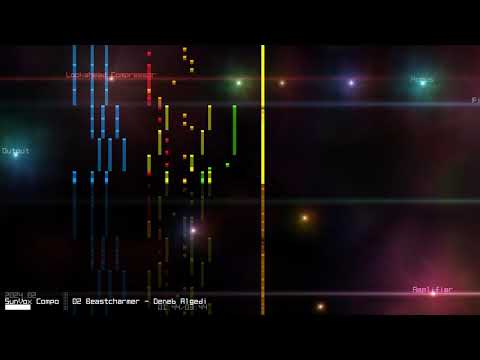I was just watching the latest SunVox content compilation and just admiring the visualization element of it.
It’s developed in Pixilang, a visual programming environment by the mad scientist developer of SunVox, Alexander Zolotov. The video looks like an extension of the DAW, showing the active patterns, instruments, and effects.
Cool visuals like this can generate interest in the DAW itself – I know I love seeing a screencast of how a song is built in Renoise, watching Renoise as it plays different peoples’ work so I can see how different artists approach music-making in this tool. When I show off my own creations to the uninitiated, they always comment on what it looks like as much as how it sounds.
I wonder if it’s worth anyone’s while to have a “visual version” of Renoise for playback, expressly for screencasting and/or displaying live, combining trippy visuals that also show insights into how the song was constructed in Renoise? Is it even possible with the existing API? ![]()
That is… would it be better or more useful than just using a regular music visualizer that creates visuals without showing much about what happened in the DAW to create that music?

![Underwater Exploration [Sega Genesis Sound Engine]](https://forum.renoise.com/uploads/default/original/3X/3/3/339534ce0789181059c3adf64852890a645b00ab.jpeg)